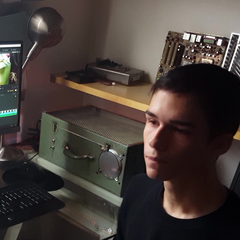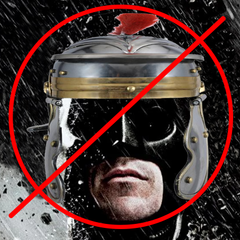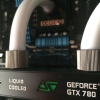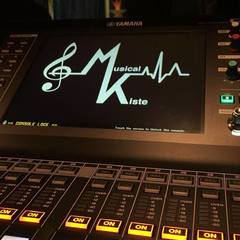-
Posts
1,057 -
Joined
-
Last visited
Reputation Activity
-
 B NEGATIVE got a reaction from MISTERDIEABETIC in Hardline workshop
B NEGATIVE got a reaction from MISTERDIEABETIC in Hardline workshop
And as a bonus!
I have been asked a few times now how i bent my pipe for my SR 2 build,so i decided to do a little walk thru.
The tools you will need are these:
A Cup of Tea...mine was a milky number to get the juices flowing.
A set of benders...these are for half-hard pipe,not annealed pipe as annealed is thin walled and should be bent by hand.
A Cutter for the chosen OD of your tube
A Ruler
Some tape.
I recommend Rothenberger benders,these are high quality and are worth the extra.
Otherwise,you may have to 'mod' the benders..like this:
The top guide was poorly aligned and needed a bit of work before use.
Poorly aligned guides can distort the tube and put creases down the length of the bend.
So..take a bit of tape to make a base mark.
Place the base mark on the 0 point of the bender.
Line up the guide with the 0 mark.
Make the bend using constant pressure,dont snatch at it,use nice firm and even pressure.
Once you have made your bend,measure the distance from the 0 mark and the outer wall of the bend.
This is the radius measurement,in this case 28mm,remember this as it will allow you to make accurate 90-90 bends to go 180 like this.
To cut the tube to length,use the cutter,rotating the the direction indicated on the tool.
Try to keep everything straight when cutting,the cutter can spiral if its not held 90 to the pipe.
This a basic guide,for any specific info,please comment below.
-
 B NEGATIVE got a reaction from Letgomyleghoe. in Hardline workshop
B NEGATIVE got a reaction from Letgomyleghoe. in Hardline workshop
This thread is a brief how to on bending acrylic pipe and the basic use of a former.
First up is the basic kit we need.....(Magoo optional)
We have a heatgun,tube,silicone fuel line that has an OD matches the ID of the tube you wish to bend and a former....the square is for checking the 90 bends on the former.
So,the former,in this case a 2" wide piece of sheet alu rolled over a deodarant can to get a radius,you can select anything with a diameter of 40mm or over,thick walled tube will need a larger radius to prevent kinks.
The line is the bend start,this will become clear in a minute
The beauty of this is that you can form any specific angle you like and bend tube to it.
For instance: You have 2 ports you wish to join on the same plane,you can form the pathing from the inner measurement between the ports and bend a former to suit. Measure the closest points between the fittings from the actual tube insert point,bend the former so the 2 faces on the 90s match the gap and Bob is indeed your uncle
The silicone fuel line.
This needs to be around .5mm smaller that the ID of the tube you are bending
Normally used for RC cars,chosen for its high melt point and great flexibility.
The small cut line round the tube is placed at the start of you bend and is the reference point for another way of doing point to point bending.
Remember the pencil line on the former? Well,put the cut line of the silicone tube on that ref point when doing the bend and you will get consistent bend radius measurement.
Like this.
For example: I want to tube 2 ports 150mm away,inlet to inlet on the inner points,I know that a bend will have a measurement of 20mm from that mark in the fuel line to the inner wall of the radius. Knowing that,we can make the first bend using the ref point on the former,insert the tube with the mark 130mm away from the inner wall of first 90,make the bend using the ref point on the former and both inner walls will be 150mm away from each other.
The bend.
You cant see the fuel line mark but its ion line with the former ref point,this is the distance you will need to heat up ,around 100mm with the bend start 2/3 its length .
This creates a very even bend.
Hold the tube around 70mm above the heat gun on high.
IMPORTANT: Keep the tube moving,rotate constantly,do not let the heat sit in any one place.
Soon the tube will not be able to hold its own weight,this is the critical moment,too long and it will create visual anomalies and start to burn.
Now i dont have pics for the next bit as i only have one pair of hands ...
When the tube starts sag,quickly transfer to the former,matching the 2 ref points up and slowly 'form' round the radiused section,dont force it,take your time. If it starts to stiffen then re heat as required.
When you are happy with your bend then let it cool naturally,when cool you can twist the fuel line straight out with no fuss.
You should be left with this
I will be adding more on the former when Magoo finds a human lackey to do the pics.
As always,heatguns are awesome but burn stuff,be careful.
Fittings and Tube:
EK & E22 acrylic tubes come in 10mm ID and 12mm OD sizes. Both EK and Bitspower have non-compression fittings for the 10/12mm acrylic tubes.
EK and Bitspower C47 fittings are double O-Ring fittings.
Bitspower C48 fittings are skinnier and use a single O-Ring.
EK & Bitspower fittings grip really tight and you need to ensure you camber the edge of the tubes at an angle else (eg: 45deg), else you will tear your O-Rings when you put in your tubes. It helps to coat the tip of your tube in silicone grease,a thin smear will do,prior to inserting into the fittings.
You'll need to ensure your tube is seated all the way to the end and past the 2nd O-Ring.
The “seating depth” of the tube on C47 fittings is 8mm.
The “seating depth” of the tube on C48 is 4mm.
The “seating depth” of the tube on EK fittings is 9mm.
The PrimoChill acrylic tubes comes in
Inner Diameter: 3/8in.
Outer Diameter: 1/2in.
Wall Thickness: 1/16in.. This means that PrimoChill acrylic tubes and fittings are NOT compatible with EK, E22, & Bitspower tubes and fittings.
ITDiva has done some testing of other former materials and found that Buna N cord has nice properties for this method,it swells slightly when warm and shrinks when cold.
A nice alternative to the silicone currently used. As always,a former OD of 1mm less then the acrylic ID applies.
Monsoon have come to the game with a new mandrel set with everything you need with the basic technique shown above but with purpose built mandrels/formers and a new range of fittings with a novel locking technique.
The Monsoon hardline kit videos:
http://geno.boxgods.com/Hardline_Premium_Fittings.mp4
http://geno.boxgods.com/Hardline_Tools_Heatgun_Kit.mp4
http://geno.boxgods.com/Hardline_Tools_mandrels_and_Measure.mp4
http://geno.boxgods.com/Hardline_Tools_mandrels_and_Measure_2.mp4
http://geno.boxgods.com/Hardline_Cutting_Kit.mp4
Monsoon Kit.
The bend quality is excellent! A slight pulling motion round the mandrel makes the bend flow very well.
-
 B NEGATIVE got a reaction from Prof in Hardline workshop
B NEGATIVE got a reaction from Prof in Hardline workshop
Well,had a bit of a result,Monsoon are sending me a Pro-kit for acrylic tube and some more info in what to expect from them
There are some very cool things being done behind the scenes as well,which im keen to share but its something for someone else to announce
All i can say is that it is an exciting time for Hardliners soon!
When it arrives,pics will be forthcoming in abundance. -
 B NEGATIVE got a reaction from NoxiousOdor in The Water Cooling Gallery
B NEGATIVE got a reaction from NoxiousOdor in The Water Cooling Gallery
And a fully parallel system layout for fun...
-
 B NEGATIVE got a reaction from Merlin Sa in Hardline workshop
B NEGATIVE got a reaction from Merlin Sa in Hardline workshop
This thread is a brief how to on bending acrylic pipe and the basic use of a former.
First up is the basic kit we need.....(Magoo optional)
We have a heatgun,tube,silicone fuel line that has an OD matches the ID of the tube you wish to bend and a former....the square is for checking the 90 bends on the former.
So,the former,in this case a 2" wide piece of sheet alu rolled over a deodarant can to get a radius,you can select anything with a diameter of 40mm or over,thick walled tube will need a larger radius to prevent kinks.
The line is the bend start,this will become clear in a minute
The beauty of this is that you can form any specific angle you like and bend tube to it.
For instance: You have 2 ports you wish to join on the same plane,you can form the pathing from the inner measurement between the ports and bend a former to suit. Measure the closest points between the fittings from the actual tube insert point,bend the former so the 2 faces on the 90s match the gap and Bob is indeed your uncle
The silicone fuel line.
This needs to be around .5mm smaller that the ID of the tube you are bending
Normally used for RC cars,chosen for its high melt point and great flexibility.
The small cut line round the tube is placed at the start of you bend and is the reference point for another way of doing point to point bending.
Remember the pencil line on the former? Well,put the cut line of the silicone tube on that ref point when doing the bend and you will get consistent bend radius measurement.
Like this.
For example: I want to tube 2 ports 150mm away,inlet to inlet on the inner points,I know that a bend will have a measurement of 20mm from that mark in the fuel line to the inner wall of the radius. Knowing that,we can make the first bend using the ref point on the former,insert the tube with the mark 130mm away from the inner wall of first 90,make the bend using the ref point on the former and both inner walls will be 150mm away from each other.
The bend.
You cant see the fuel line mark but its ion line with the former ref point,this is the distance you will need to heat up ,around 100mm with the bend start 2/3 its length .
This creates a very even bend.
Hold the tube around 70mm above the heat gun on high.
IMPORTANT: Keep the tube moving,rotate constantly,do not let the heat sit in any one place.
Soon the tube will not be able to hold its own weight,this is the critical moment,too long and it will create visual anomalies and start to burn.
Now i dont have pics for the next bit as i only have one pair of hands ...
When the tube starts sag,quickly transfer to the former,matching the 2 ref points up and slowly 'form' round the radiused section,dont force it,take your time. If it starts to stiffen then re heat as required.
When you are happy with your bend then let it cool naturally,when cool you can twist the fuel line straight out with no fuss.
You should be left with this
I will be adding more on the former when Magoo finds a human lackey to do the pics.
As always,heatguns are awesome but burn stuff,be careful.
Fittings and Tube:
EK & E22 acrylic tubes come in 10mm ID and 12mm OD sizes. Both EK and Bitspower have non-compression fittings for the 10/12mm acrylic tubes.
EK and Bitspower C47 fittings are double O-Ring fittings.
Bitspower C48 fittings are skinnier and use a single O-Ring.
EK & Bitspower fittings grip really tight and you need to ensure you camber the edge of the tubes at an angle else (eg: 45deg), else you will tear your O-Rings when you put in your tubes. It helps to coat the tip of your tube in silicone grease,a thin smear will do,prior to inserting into the fittings.
You'll need to ensure your tube is seated all the way to the end and past the 2nd O-Ring.
The “seating depth” of the tube on C47 fittings is 8mm.
The “seating depth” of the tube on C48 is 4mm.
The “seating depth” of the tube on EK fittings is 9mm.
The PrimoChill acrylic tubes comes in
Inner Diameter: 3/8in.
Outer Diameter: 1/2in.
Wall Thickness: 1/16in.. This means that PrimoChill acrylic tubes and fittings are NOT compatible with EK, E22, & Bitspower tubes and fittings.
ITDiva has done some testing of other former materials and found that Buna N cord has nice properties for this method,it swells slightly when warm and shrinks when cold.
A nice alternative to the silicone currently used. As always,a former OD of 1mm less then the acrylic ID applies.
Monsoon have come to the game with a new mandrel set with everything you need with the basic technique shown above but with purpose built mandrels/formers and a new range of fittings with a novel locking technique.
The Monsoon hardline kit videos:
http://geno.boxgods.com/Hardline_Premium_Fittings.mp4
http://geno.boxgods.com/Hardline_Tools_Heatgun_Kit.mp4
http://geno.boxgods.com/Hardline_Tools_mandrels_and_Measure.mp4
http://geno.boxgods.com/Hardline_Tools_mandrels_and_Measure_2.mp4
http://geno.boxgods.com/Hardline_Cutting_Kit.mp4
Monsoon Kit.
The bend quality is excellent! A slight pulling motion round the mandrel makes the bend flow very well.
-
 B NEGATIVE got a reaction from documnt in The Water Cooling Gallery
B NEGATIVE got a reaction from documnt in The Water Cooling Gallery
And a fully parallel system layout for fun...
-
 B NEGATIVE got a reaction from Jsunn in Hardline workshop
B NEGATIVE got a reaction from Jsunn in Hardline workshop
This thread is a brief how to on bending acrylic pipe and the basic use of a former.
First up is the basic kit we need.....(Magoo optional)
We have a heatgun,tube,silicone fuel line that has an OD matches the ID of the tube you wish to bend and a former....the square is for checking the 90 bends on the former.
So,the former,in this case a 2" wide piece of sheet alu rolled over a deodarant can to get a radius,you can select anything with a diameter of 40mm or over,thick walled tube will need a larger radius to prevent kinks.
The line is the bend start,this will become clear in a minute
The beauty of this is that you can form any specific angle you like and bend tube to it.
For instance: You have 2 ports you wish to join on the same plane,you can form the pathing from the inner measurement between the ports and bend a former to suit. Measure the closest points between the fittings from the actual tube insert point,bend the former so the 2 faces on the 90s match the gap and Bob is indeed your uncle
The silicone fuel line.
This needs to be around .5mm smaller that the ID of the tube you are bending
Normally used for RC cars,chosen for its high melt point and great flexibility.
The small cut line round the tube is placed at the start of you bend and is the reference point for another way of doing point to point bending.
Remember the pencil line on the former? Well,put the cut line of the silicone tube on that ref point when doing the bend and you will get consistent bend radius measurement.
Like this.
For example: I want to tube 2 ports 150mm away,inlet to inlet on the inner points,I know that a bend will have a measurement of 20mm from that mark in the fuel line to the inner wall of the radius. Knowing that,we can make the first bend using the ref point on the former,insert the tube with the mark 130mm away from the inner wall of first 90,make the bend using the ref point on the former and both inner walls will be 150mm away from each other.
The bend.
You cant see the fuel line mark but its ion line with the former ref point,this is the distance you will need to heat up ,around 100mm with the bend start 2/3 its length .
This creates a very even bend.
Hold the tube around 70mm above the heat gun on high.
IMPORTANT: Keep the tube moving,rotate constantly,do not let the heat sit in any one place.
Soon the tube will not be able to hold its own weight,this is the critical moment,too long and it will create visual anomalies and start to burn.
Now i dont have pics for the next bit as i only have one pair of hands ...
When the tube starts sag,quickly transfer to the former,matching the 2 ref points up and slowly 'form' round the radiused section,dont force it,take your time. If it starts to stiffen then re heat as required.
When you are happy with your bend then let it cool naturally,when cool you can twist the fuel line straight out with no fuss.
You should be left with this
I will be adding more on the former when Magoo finds a human lackey to do the pics.
As always,heatguns are awesome but burn stuff,be careful.
Fittings and Tube:
EK & E22 acrylic tubes come in 10mm ID and 12mm OD sizes. Both EK and Bitspower have non-compression fittings for the 10/12mm acrylic tubes.
EK and Bitspower C47 fittings are double O-Ring fittings.
Bitspower C48 fittings are skinnier and use a single O-Ring.
EK & Bitspower fittings grip really tight and you need to ensure you camber the edge of the tubes at an angle else (eg: 45deg), else you will tear your O-Rings when you put in your tubes. It helps to coat the tip of your tube in silicone grease,a thin smear will do,prior to inserting into the fittings.
You'll need to ensure your tube is seated all the way to the end and past the 2nd O-Ring.
The “seating depth” of the tube on C47 fittings is 8mm.
The “seating depth” of the tube on C48 is 4mm.
The “seating depth” of the tube on EK fittings is 9mm.
The PrimoChill acrylic tubes comes in
Inner Diameter: 3/8in.
Outer Diameter: 1/2in.
Wall Thickness: 1/16in.. This means that PrimoChill acrylic tubes and fittings are NOT compatible with EK, E22, & Bitspower tubes and fittings.
ITDiva has done some testing of other former materials and found that Buna N cord has nice properties for this method,it swells slightly when warm and shrinks when cold.
A nice alternative to the silicone currently used. As always,a former OD of 1mm less then the acrylic ID applies.
Monsoon have come to the game with a new mandrel set with everything you need with the basic technique shown above but with purpose built mandrels/formers and a new range of fittings with a novel locking technique.
The Monsoon hardline kit videos:
http://geno.boxgods.com/Hardline_Premium_Fittings.mp4
http://geno.boxgods.com/Hardline_Tools_Heatgun_Kit.mp4
http://geno.boxgods.com/Hardline_Tools_mandrels_and_Measure.mp4
http://geno.boxgods.com/Hardline_Tools_mandrels_and_Measure_2.mp4
http://geno.boxgods.com/Hardline_Cutting_Kit.mp4
Monsoon Kit.
The bend quality is excellent! A slight pulling motion round the mandrel makes the bend flow very well.
-
 B NEGATIVE got a reaction from Limecat86 in The Water Cooling Gallery
B NEGATIVE got a reaction from Limecat86 in The Water Cooling Gallery
And a fully parallel system layout for fun...
-
.png)
-
 B NEGATIVE got a reaction from This kid builds pc in The Water Cooling Gallery
B NEGATIVE got a reaction from This kid builds pc in The Water Cooling Gallery
And a fully parallel system layout for fun...
-
 B NEGATIVE got a reaction from oscar7601 in The Water Cooling Gallery
B NEGATIVE got a reaction from oscar7601 in The Water Cooling Gallery
And a fully parallel system layout for fun...
-
 B NEGATIVE got a reaction from LazySpeck in The Water Cooling Gallery
B NEGATIVE got a reaction from LazySpeck in The Water Cooling Gallery
And a fully parallel system layout for fun...
-
 B NEGATIVE got a reaction from SmashinMachine in The Water Cooling Gallery
B NEGATIVE got a reaction from SmashinMachine in The Water Cooling Gallery
And a fully parallel system layout for fun...
-
 B NEGATIVE got a reaction from bling in The Water Cooling Gallery
B NEGATIVE got a reaction from bling in The Water Cooling Gallery
And a fully parallel system layout for fun...
-

-
 B NEGATIVE got a reaction from cj09beira in EK-MLC Phoenix
B NEGATIVE got a reaction from cj09beira in EK-MLC Phoenix
You are very incorrect. Dual loops are less efficient on all levels than a single loop. Single loops allow you to use all available rad space at all times,dual loops do not. Warming of components that are not being used is not even a concern so I'm confused why you would even worry about this. Rad efficiency goes up with higher fluid temps and has no relation to temperature glide across components.
If you want some 'credentials', I work at EK and have been doing this far longer than you.....
-
 B NEGATIVE got a reaction from NoRomanBatmansAllowed in Hardline workshop
B NEGATIVE got a reaction from NoRomanBatmansAllowed in Hardline workshop
This thread is a brief how to on bending acrylic pipe and the basic use of a former.
First up is the basic kit we need.....(Magoo optional)
We have a heatgun,tube,silicone fuel line that has an OD matches the ID of the tube you wish to bend and a former....the square is for checking the 90 bends on the former.
So,the former,in this case a 2" wide piece of sheet alu rolled over a deodarant can to get a radius,you can select anything with a diameter of 40mm or over,thick walled tube will need a larger radius to prevent kinks.
The line is the bend start,this will become clear in a minute
The beauty of this is that you can form any specific angle you like and bend tube to it.
For instance: You have 2 ports you wish to join on the same plane,you can form the pathing from the inner measurement between the ports and bend a former to suit. Measure the closest points between the fittings from the actual tube insert point,bend the former so the 2 faces on the 90s match the gap and Bob is indeed your uncle
The silicone fuel line.
This needs to be around .5mm smaller that the ID of the tube you are bending
Normally used for RC cars,chosen for its high melt point and great flexibility.
The small cut line round the tube is placed at the start of you bend and is the reference point for another way of doing point to point bending.
Remember the pencil line on the former? Well,put the cut line of the silicone tube on that ref point when doing the bend and you will get consistent bend radius measurement.
Like this.
For example: I want to tube 2 ports 150mm away,inlet to inlet on the inner points,I know that a bend will have a measurement of 20mm from that mark in the fuel line to the inner wall of the radius. Knowing that,we can make the first bend using the ref point on the former,insert the tube with the mark 130mm away from the inner wall of first 90,make the bend using the ref point on the former and both inner walls will be 150mm away from each other.
The bend.
You cant see the fuel line mark but its ion line with the former ref point,this is the distance you will need to heat up ,around 100mm with the bend start 2/3 its length .
This creates a very even bend.
Hold the tube around 70mm above the heat gun on high.
IMPORTANT: Keep the tube moving,rotate constantly,do not let the heat sit in any one place.
Soon the tube will not be able to hold its own weight,this is the critical moment,too long and it will create visual anomalies and start to burn.
Now i dont have pics for the next bit as i only have one pair of hands ...
When the tube starts sag,quickly transfer to the former,matching the 2 ref points up and slowly 'form' round the radiused section,dont force it,take your time. If it starts to stiffen then re heat as required.
When you are happy with your bend then let it cool naturally,when cool you can twist the fuel line straight out with no fuss.
You should be left with this
I will be adding more on the former when Magoo finds a human lackey to do the pics.
As always,heatguns are awesome but burn stuff,be careful.
Fittings and Tube:
EK & E22 acrylic tubes come in 10mm ID and 12mm OD sizes. Both EK and Bitspower have non-compression fittings for the 10/12mm acrylic tubes.
EK and Bitspower C47 fittings are double O-Ring fittings.
Bitspower C48 fittings are skinnier and use a single O-Ring.
EK & Bitspower fittings grip really tight and you need to ensure you camber the edge of the tubes at an angle else (eg: 45deg), else you will tear your O-Rings when you put in your tubes. It helps to coat the tip of your tube in silicone grease,a thin smear will do,prior to inserting into the fittings.
You'll need to ensure your tube is seated all the way to the end and past the 2nd O-Ring.
The “seating depth” of the tube on C47 fittings is 8mm.
The “seating depth” of the tube on C48 is 4mm.
The “seating depth” of the tube on EK fittings is 9mm.
The PrimoChill acrylic tubes comes in
Inner Diameter: 3/8in.
Outer Diameter: 1/2in.
Wall Thickness: 1/16in.. This means that PrimoChill acrylic tubes and fittings are NOT compatible with EK, E22, & Bitspower tubes and fittings.
ITDiva has done some testing of other former materials and found that Buna N cord has nice properties for this method,it swells slightly when warm and shrinks when cold.
A nice alternative to the silicone currently used. As always,a former OD of 1mm less then the acrylic ID applies.
Monsoon have come to the game with a new mandrel set with everything you need with the basic technique shown above but with purpose built mandrels/formers and a new range of fittings with a novel locking technique.
The Monsoon hardline kit videos:
http://geno.boxgods.com/Hardline_Premium_Fittings.mp4
http://geno.boxgods.com/Hardline_Tools_Heatgun_Kit.mp4
http://geno.boxgods.com/Hardline_Tools_mandrels_and_Measure.mp4
http://geno.boxgods.com/Hardline_Tools_mandrels_and_Measure_2.mp4
http://geno.boxgods.com/Hardline_Cutting_Kit.mp4
Monsoon Kit.
The bend quality is excellent! A slight pulling motion round the mandrel makes the bend flow very well.
-
 B NEGATIVE got a reaction from Sany(Gallium supplier) in Project Gallium (Liquid Metal Cooled PC)
B NEGATIVE got a reaction from Sany(Gallium supplier) in Project Gallium (Liquid Metal Cooled PC)
It does,easily.
This project isnt going to work very well without custom blocks and rads,you will need a significant amount of pump power too.
Gallium also is reacative with Steel too,not just Alu
Gallium is often used for vacuum cooling where a leak could destroy the kit and the test piece,the pumps are coiled tubes wrapped around a rotor which is locked in place,there is no impeller action directly on the fluid,its purely using the magnetic forces from the stator.
The material the OP is looking for is Galinstan btw....
Only applies to drop formation,not fully wetted parts.
-
 B NEGATIVE got a reaction from Tech22 in Holy Icarus! Melted / deformed PETG runs in hardline watercooled Node 202
B NEGATIVE got a reaction from Tech22 in Holy Icarus! Melted / deformed PETG runs in hardline watercooled Node 202
PETG and Glycol coolants = Broken. Glycols are a solvent for PETG.
I have been saying till im blue in the face,PETG is not acceptable for our us.
-
 B NEGATIVE got a reaction from WkdPaul in Holy Icarus! Melted / deformed PETG runs in hardline watercooled Node 202
B NEGATIVE got a reaction from WkdPaul in Holy Icarus! Melted / deformed PETG runs in hardline watercooled Node 202
PETG and Glycol coolants = Broken. Glycols are a solvent for PETG.
I have been saying till im blue in the face,PETG is not acceptable for our us.
-
 B NEGATIVE got a reaction from Anthony_95 in [S Frame] Plum Blossom
B NEGATIVE got a reaction from Anthony_95 in [S Frame] Plum Blossom
S Frame has had its etch coat but I wanted to see how everything looks in place......
Now to plot out where im doing my cut outs and look at how im running the carbon fiber tubing to keep everything tidy.
As some may know,I handed in my notice at EK so I will be concentrating on packing up all my crap and driving back to the UK....just in time for the nuclear lightshow! This means thee will be a few weeks of doing nothing with this build or I may smash the paint out before I go...depending on weather.
-
 B NEGATIVE got a reaction from Hasle in [S Frame] Plum Blossom
B NEGATIVE got a reaction from Hasle in [S Frame] Plum Blossom
Our resident lens monkey and professional Serbian took some pics today.......
Thanks Atila.
-
 B NEGATIVE got a reaction from Hasle in [S Frame] Plum Blossom
B NEGATIVE got a reaction from Hasle in [S Frame] Plum Blossom
S Frame has had its etch coat but I wanted to see how everything looks in place......
Now to plot out where im doing my cut outs and look at how im running the carbon fiber tubing to keep everything tidy.
As some may know,I handed in my notice at EK so I will be concentrating on packing up all my crap and driving back to the UK....just in time for the nuclear lightshow! This means thee will be a few weeks of doing nothing with this build or I may smash the paint out before I go...depending on weather.
-
 B NEGATIVE got a reaction from Discowarewolf69 in [S Frame] Plum Blossom
B NEGATIVE got a reaction from Discowarewolf69 in [S Frame] Plum Blossom
Hi everybody and welcome to my newest log!
This build is going to be based around the mighty S Frame,a case I have been itching to mod since it first released,thanks Katerina @ In Win NL for giving me the last one they had!
https://www.inwin-style.com/en/gaming-chassis/S-Frame
Im going for a mecha look this time using the same colour palette as LUMO but with the yellow as highlight rather than the dominant colour.
It seems a shame to take drills,saws and files to such a beauty of a case but I have big plans...
Hardware!
ASUS have stepped with a rampage Edition 10 and a pair of 480's!
https://www.asus.com/uk/Motherboards/ROG-RAMPAGE-V-EDITION-10/
https://www.asus.com/uk/Graphics-Cards/ROG-STRIX-RX480-O8G-GAMING/
All the extras...and that DAC unit....
And with the gorgeous DDR4 from G Skill!
http://www.gskill.com/en/product/f4-3200c16q2-64gtzky
2 of the 4 Strix 480's going in here.....
And in the case?
Power is coming from my trusty 1500w Platimax,about time it did stuff other than powering pumps when filling loops!
Watercooling to come from EK of course!
This one is a labour of love so it will not be a quick log and I do ask people comment,positive/negative doesnt matter,feedback is welcomed!
Thanks to the contributors to this log,ASUS UK,EKWB,G Skill and the ever awesome In Win! -
 B NEGATIVE got a reaction from AdrianB in Hardline workshop
B NEGATIVE got a reaction from AdrianB in Hardline workshop
And as a bonus!
I have been asked a few times now how i bent my pipe for my SR 2 build,so i decided to do a little walk thru.
The tools you will need are these:
A Cup of Tea...mine was a milky number to get the juices flowing.
A set of benders...these are for half-hard pipe,not annealed pipe as annealed is thin walled and should be bent by hand.
A Cutter for the chosen OD of your tube
A Ruler
Some tape.
I recommend Rothenberger benders,these are high quality and are worth the extra.
Otherwise,you may have to 'mod' the benders..like this:
The top guide was poorly aligned and needed a bit of work before use.
Poorly aligned guides can distort the tube and put creases down the length of the bend.
So..take a bit of tape to make a base mark.
Place the base mark on the 0 point of the bender.
Line up the guide with the 0 mark.
Make the bend using constant pressure,dont snatch at it,use nice firm and even pressure.
Once you have made your bend,measure the distance from the 0 mark and the outer wall of the bend.
This is the radius measurement,in this case 28mm,remember this as it will allow you to make accurate 90-90 bends to go 180 like this.
To cut the tube to length,use the cutter,rotating the the direction indicated on the tool.
Try to keep everything straight when cutting,the cutter can spiral if its not held 90 to the pipe.
This a basic guide,for any specific info,please comment below.






















